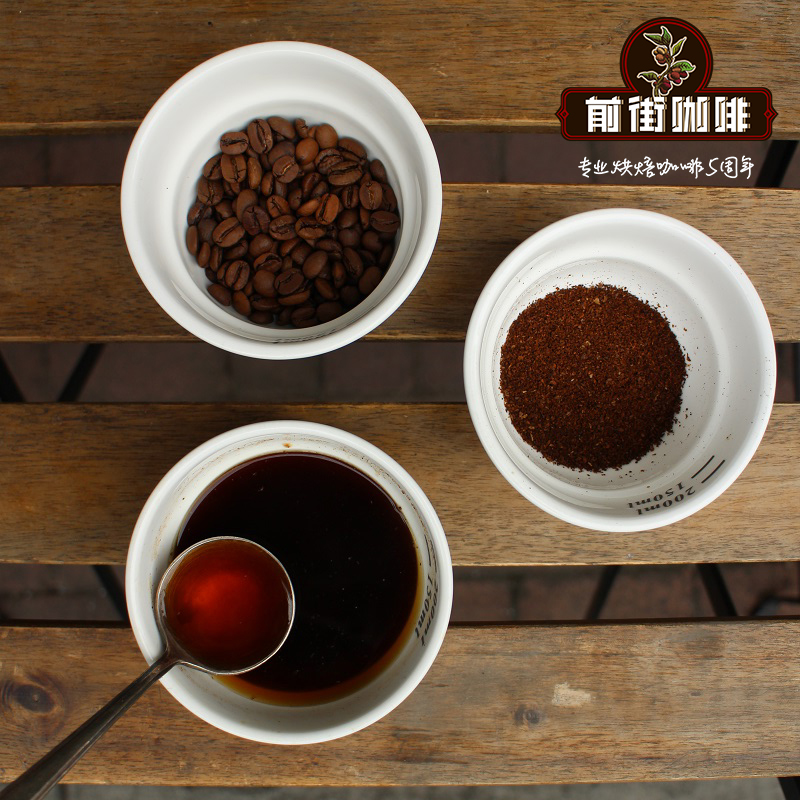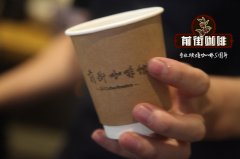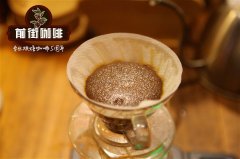Burundi | Kajanza province | what is the flavor of the micro-batch washing bourbon of the champion processing plant Jangeway?

Professional coffee knowledge exchange more coffee bean information please follow the coffee workshop (Wechat official account cafe_style)
Burundi | Kajanza province | what is the flavor of the micro-batch washing bourbon of the champion processing plant Jangeway?
Cajanza province is able to produce high-quality coffee due to two main reasons: first, the climatic environment at high altitude, and second, good washing plant system and equipment. The Painjia processing plant, located in the Cabuye district of Kayanza province in Burundi, was established in 2009 and began operation in 2010. Won the champion and third runner-up in the COE competition in 2014. Adhering to the principle of "producing small but high-quality coffee", the Panjia processing plant handles coffee cherries harvested by about 3400 farmers each year, providing many incentives for coffee farmers to work harder and concentrate on harvesting. The coffee cherries in the processing plant are all washed and fermented. After the coffee is fermented, it will be moved to a cool place to peel in advance to protect the coffee from direct sunlight. The coffee is then moved to a dry scaffolding in the sun and is constantly turned over to ensure a balanced exposure. And in the process of moving the coffee to the scaffolding, the outer skin of the coffee is intact!
Burundi is a small landlocked country located in East Africa, surrounded by Rwanda, Tanzania and Congo to the north, east and west, respectively, and more than half of its border with the Democratic Republic of the Congo lies on the famous Lake Lake Tanganyika. Because the territorial boundary looks like the heart and is located in the interior of East Africa, there is a beautiful nickname-the Heart of Africa, but it is the poorest country in the world. About 90% of the population is engaged in the coffee industry as a source of livelihood. Coffee has been grown in Burundi since the 1930s, mostly Arabica beans, including coffee produced in the Bourbon area, which is famous for its quality. The province of Cajanza is located to the north of Burundi and at the border between Burundi and Rwanda.
The province of Cajanza is located to the north of Burundi and at the border between Burundi and Rwanda. Cajanza province is able to produce high-quality coffee due to two main reasons: first, the climatic environment at high altitude, and second, good washing plant system and equipment. The Pennjia processing plant, located in Mpanga Hill, is owned by SEGEC. Painjia is located in the Cabuye district of the province of Kayanza in Burundi. Mardadi, the site of the Painjia processing plant, is a small area of Cayanza. The Pennjia treatment plant was established in 2009 and began operation in 2010. SEGEC is a private washing treatment plant located in Kayanza district. Jean Clement Birabereye, the manager of the processing plant, always has a way to find young entrepreneurs who are interested in boutique coffee to invest, and with his over-rich coffee experience, Jean Clement Birabereye has also been appointed as a processing plant manager for Buwai and Kiryama. SEGEC won the fourth place in the country in Burundi Prestige Cup in 2011, and won the title of champion and second runner-up in the CoE Excellence Cup in Burundi.
Although it is a processing plant owned by SEGEC, the Panjia processing plant adheres to the same principle-"producing small but high quality coffee." the Panjia processing plant handles coffee cherries harvested by about 3400 farmers each year. Based on the ultimate principle of the Parnjia plant, quality first, the plant provides many incentives for coffee farmers to work harder and concentrate on harvesting.
The coffee cherries in the processing plant are all washed and fermented. After the coffee is fermented, it will be moved to a cool place to peel in advance to protect the coffee from direct sunlight. The coffee is then moved to a dry scaffolding in the sun and is constantly turned over to ensure a balanced exposure. And in the process of moving the coffee to the scaffolding, the outer skin of the coffee is intact! This batch of coffee flavor features: lime, citrus, Hawthorn, lemon Yoledo, yogurt, clear and sharp lines, bright and distinct personality, crystal clear but still retain depth
Flavor features: lime, citrus, Hawthorn, lemon Yoledo, yogurt, clear and sharp lines, bright and distinct personality, crystal clear but still retain depth.
Production area: Cabuye district, Kayanza province (Kabuye)
Variety: Bourbon species
Sea pull: 1810 meters
Treatment: washing
Harvest time: may to August
Qianjie recommended cooking:
Filter cup: Hario V60
Water temperature: 90 degrees
Degree of grinding: small Fuji 3.5
Cooking methods: the ratio of water to powder is 1:15, 15g powder, the first injection of 25g water, 25 s steaming, the second injection to 120g water cut off, waiting for the powder bed water to half and then water injection, slow water injection until 225g water, extraction time about 2:00
Analysis: using three-stage brewing to clarify the flavor of the front, middle and back of the coffee. Because V60 has many ribs and the drainage speed is fast, it can prolong the extraction time when the water is cut off.
Important Notice :
前街咖啡 FrontStreet Coffee has moved to new addredd:
FrontStreet Coffee Address: 315,Donghua East Road,GuangZhou
Tel:020 38364473
- Prev

Panamanian province of Chiriqui | flavors of tanned wines from Chateau Santa Teresa in microbatch 18
Professional coffee knowledge exchange more coffee bean information please follow the coffee workshop (Wechat official account cafe_style) Panama Chiriqui Province | Santa Teresa Manor Sun Wine aroma treatment method 18 micro-batch flavor? Located at high altitudes, Finca Santa Teresa, FST has a unique rich black volcanic soil and accepts
- Next

South of South Minas, Brazil. Does the forest manor in the town of Camo go to peel and bask in the flavor of Kaduai?
Professional coffee knowledge exchange more coffee bean information please follow the coffee workshop (Wechat official account cafe_style) South South Minas, Brazil | Camo Town Forest Manor peel sun Kaduai flavor? Brazil is currently the world's largest coffee producer, with a total output of 48.095 billion bags, surpassing the global output of 1% of the world's total. Brazilian Fine Coffee Association (BSCA) is committed to
Related
- Detailed explanation of Jadeite planting Land in Panamanian Jadeite Manor introduction to the grading system of Jadeite competitive bidding, Red bid, Green bid and Rose Summer
- Story of Coffee planting in Brenka region of Costa Rica Stonehenge Manor anaerobic heavy honey treatment of flavor mouth
- What's on the barrel of Blue Mountain Coffee beans?
- Can American coffee also pull flowers? How to use hot American style to pull out a good-looking pattern?
- Can you make a cold extract with coffee beans? What is the right proportion for cold-extracted coffee formula?
- Indonesian PWN Gold Mandrine Coffee Origin Features Flavor How to Chong? Mandolin coffee is American.
- A brief introduction to the flavor characteristics of Brazilian yellow bourbon coffee beans
- What is the effect of different water quality on the flavor of cold-extracted coffee? What kind of water is best for brewing coffee?
- Why do you think of Rose Summer whenever you mention Panamanian coffee?
- Introduction to the characteristics of authentic blue mountain coffee bean producing areas? What is the CIB Coffee Authority in Jamaica?

